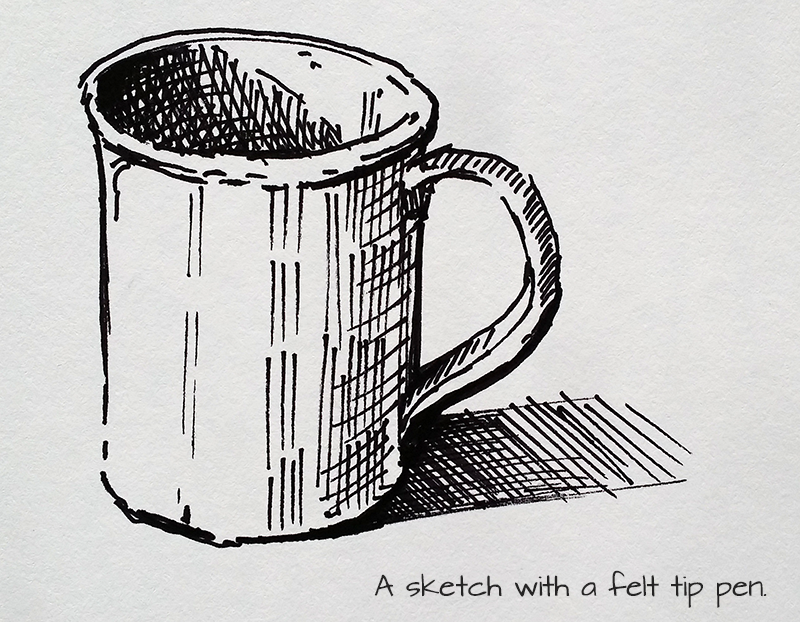Felt tip pen draw
Table of Contents
Table of Contents
If you’re looking for a way to spice up your art, you might want to try using felt tip pens. They’re easy to use, come in a variety of colors, and you can create some pretty stunning pieces with them. But if you’re new to using felt tip pens, you might be struggling to figure out how to use them effectively. In this blog post, we’ll cover everything you need to know about how to draw with felt tip pens.
Common Pain Points When Drawing with Felt Tip Pens
Drawing with felt tip pens can be challenging, especially if you’re used to using other mediums like pencils or charcoal. One common issue is that felt tip pens tend to bleed, even on high-quality paper. This can make your lines look less crisp and defined. Additionally, felt tip pens can be difficult to shade and blend, which can make it difficult to create the illusion of depth and dimension in your work.
How to Draw with Felt Tip Pens
The key to drawing with felt tip pens is to use them confidently and experimentally. Unlike other mediums, felt tip pens require you to commit to your marks, since they’re difficult to erase. Instead of trying to create a perfect piece, focus on the process of experimenting with different colors, line weights, and techniques.
When you’re using felt tip pens, it’s important to choose the right paper. Look for a heavy-weight or mixed media paper that won’t bleed when the pen touches it. You might also want to consider using a fine liner or technical pen for details, since these won’t bleed as much as larger felt tip pens.
If you want to create the illusion of depth and dimension in your work, try experimenting with layering and cross-hatching. You can also use different colors to create shadows and highlights. And don’t be afraid to experiment with different techniques, like stippling, scribbling, and blending.
Summary of How to Draw with Felt Tip Pens
In summary, drawing with felt tip pens can be a fun and rewarding experience, but it does come with its challenges. To get the most out of your felt tip pens, choose the right paper, use them confidently and experimentally, and be open to trying out different techniques and styles.
The Benefits of Using Felt Tip Pens
One of the best things about using felt tip pens is that they’re incredibly versatile. Whether you’re drawing cartoons or creating abstract art, you can achieve a wide range of styles and effects with felt tip pens.
Here’s a personal experience with felt tip pens: When I first started using felt tip pens, I was intimidated by their reputation for bleeding and smudging. But once I started experimenting with them, I found that they were a great way to add color and vibrancy to my work. I especially love using them for lettering and calligraphy, since they create crisp, defined lines.
Advanced Techniques for Using Felt Tip Pens
If you’re looking to take your felt tip pen game to the next level, try experimenting with these advanced techniques:
1. Blending Colors
You can create some stunning effects by blending different colors together with your felt tip pens. Start by laying down a layer of your lightest color, then add your darker colors on top. Use a blending marker or a cotton swab to blend the colors together.
2. Layering
Layering is a great way to create depth and texture in your work. Start by laying down a layer of one color, then add a layer of another color on top. Keep layering until you achieve the desired effect.
3. Experimenting with Line Weights
Varying the thickness of your lines is a great way to add interest and texture to your work. Try experimenting with different line weights, from thin, delicate lines to thick, bold lines.
Question and Answer Section About How to Draw with Felt Tip Pens
1. How do I prevent my felt tip pens from bleeding?
To prevent bleeding, use high-quality paper that won’t absorb the ink as much. You can also try using a fine liner or technical pen for details, since these won’t bleed as much as larger felt tip pens.
2. How can I make my felt tip pen drawings look more vibrant?
Try experimenting with layering and blending different colors together. You can also add highlights and shadows to create depth and dimension in your work.
3. How do I create fine details with felt tip pens?
For fine details, use a fine liner or technical pen. These pens have smaller tips, which make it easier to create delicate lines.
4. How do I create a gradient effect with felt tip pens?
Start by laying down a layer of your lightest color, then add your darker colors on top. Use a blending marker or a cotton swab to blend the colors together.
Conclusion of How to Draw with Felt Tip Pens
Drawing with felt tip pens can be challenging, but with practice, you can create some stunning pieces. Use high-quality paper, experiment with different techniques and styles, and don’t be afraid to make mistakes. With time and patience, you’ll develop your own style and find new ways to make your felt tip pen art stand out.
Gallery
Épinglé Sur Simple Drawings

Photo Credit by: bing.com /
How To Draw With A Felt Tip Pen | A Doodle Chat - YouTube

Photo Credit by: bing.com / felt tip pen draw
Felt Tip Pen Drawing Techniques | Year 8 Art | Pinterest | Drawing

Photo Credit by: bing.com / tip techniques habilidades seç pano
The Best Drawing Pen - It’s Not What You Think

Photo Credit by: bing.com / pen drawing drawings felt sketch draw tip pens ink think sketches line easy using thevirtualinstructor variety visit intuitively naturally bit
Draw ANYTHING With Felt-Tip Pens & Markers | Daves Deals

Photo Credit by: bing.com / pens





